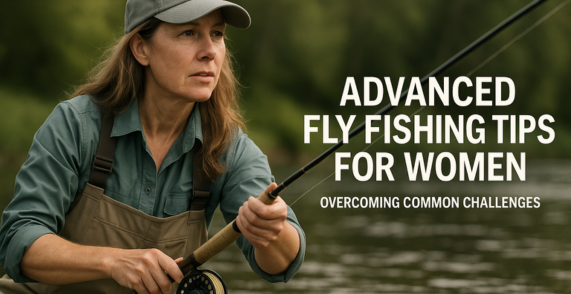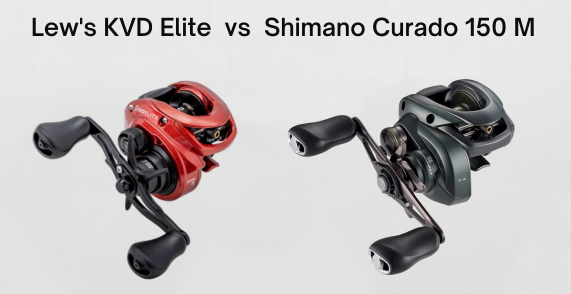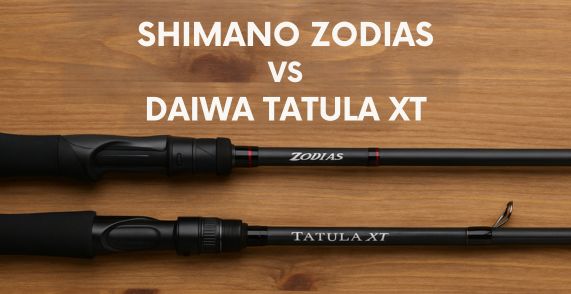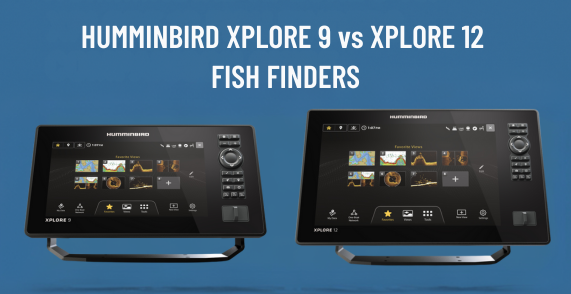In This Post
- 1 Key Takeaways
- 2 Women Are Changing the Face of Fly Fishing
- 3 Essential Gear Designed for Women
- 4 Mastering Advanced Casting Techniques
- 5 Presentation Strategies That Catch More Fish
- 6 Overcoming Common Challenges for Women Anglers
- 7 Safety Strategies for Solo Fishing
- 8 Seasonal Adaptations for Year-Round Success
- 9 Building Your Fly Fishing Community
- 10 Your Natural Advantages: Why Women Often Make Better Anglers
Key Takeaways
- Women make up 37% of all anglers today, the largest share on record, and they bring natural strengths like patience and finesse to fly fishing.
- Properly fitting gear designed specifically for women’s bodies is essential for comfort, performance, and safety on the water.
- Research shows that women who fish demonstrate greater perseverance and grit, with 87% reporting increased self-worth from the activity.
- Advanced casting techniques like the 10-2 clock method help women excel by focusing on technique over brute strength.
- Connecting with supportive communities of female anglers can transform your fly fishing experience and skill development.
Women Are Changing the Face of Fly Fishing
Fly fishing is undergoing a notable transformation. Women now represent 37% of all anglers—the largest share on record.
This increase in female participation is reshaping what was historically a male-dominated pursuit, with previous statistics showing nearly 70% of fly fishing enthusiasts were men.
What’s driving this change? Research reveals that women bring unique strengths to fly fishing that often translate to exceptional skill on the water.
Natural patience, superior listening abilities, multitasking skills, and an innate sense of finesse give female anglers distinct advantages in a sport where technique trumps raw power.
The benefits extend far beyond catching fish. Studies from the Recreational Boating and Fishing Foundation demonstrate that women who fish exhibit greater perseverance and grit compared to their non-fishing counterparts.
Even more compelling, 87% of women who participate in fishing report significantly increased feelings of self-worth.
The mental health advantages are substantial as well. Fly fishing offers women a powerful form of mindfulness practice, with documented benefits including reduced anxiety and enhanced present-moment awareness.
The rhythmic casting, connection with nature, and focused attention required create a meditative state that many female anglers describe as transformative.
Essential Gear Designed for Women
1. Waders That Actually Fit
Properly fitting waders are non-negotiable for women on the water. Unlike the baggy, ill-fitting options of the past, today’s women-specific waders feature proportioning designed explicitly for female frames.
Look for models with adjustable suspenders, proper hip-to-waist ratios, and articulated knees that allow for comfortable movement.
Top-quality women’s waders now include features like drop-seat designs for easier bathroom breaks—a practical consideration that can make long days on the water much more comfortable.
The difference between well-fitting waders and oversized men’s models isn’t just about comfort; it’s also a safety consideration when navigating slippery rocks and strong currents.
2. Women-Specific Wading Boots
Wading boots designed for women are crucial for stability and comfort. The best options are lightweight while still providing proper ankle support and traction. Unlike downsized men’s boots, women’s wading boots are built on lasts specifically engineered for female feet, with narrower heels and appropriate proportions.
When selecting wading boots, look for pairs that run true to shoe size and allow room for wading socks without being excessively bulky. Many women report that properly fitted boots significantly reduce fatigue during long days standing in current.
3. Rods with Proper Grip Diameter
Handling a rod with an oversized grip diameter can quickly lead to hand fatigue and diminished casting accuracy.
Women’s fly rods often feature slimmer grips designed specifically for smaller hands, allowing for better control and reduced strain during all-day fishing sessions.
A 9-foot rod with 5-weight line offers versatility for beginners and intermediate anglers alike, providing enough backbone for various species while remaining lightweight enough for comfortable handling.
Remember that fly fishing emphasizes finesse over power—a principle that plays to many women’s natural strengths.
4. Appropriate Packs and Vests
Fly fishing vests and packs designed for women accommodate different body proportions with shorter torso lengths and adjustments for bust measurements.
Many female anglers find that sling packs or chest packs offer better weight distribution and comfort compared to traditional vests.
Regardless of style, ensure your pack or vest allows easy access to essential gear without restricting movement. Organization is key—look for multiple pockets sized appropriately for fly boxes, tippet spools, and tools.
5. Technical Clothing for All Conditions
Layering effectively is crucial for comfort across changing weather conditions. Women-specific technical fishing clothing should offer UPF sun protection, moisture-wicking properties, and appropriate insulation options.
Consider investing in quick-drying pants with articulated knees, long-sleeve shirts with ventilation features, and lightweight waterproof jackets sized for women.
Proper sun protection is particularly important, so don’t forget a wide-brimmed hat and polarized sunglasses that fit comfortably on smaller faces.
Mastering Advanced Casting Techniques
1. Perfecting the 10-2 Clock Method
The foundation of effective fly casting lies in mastering the 10-2 clock method. This technique derives its name from the motion of the rod tip, which should travel between the 10 o’clock and 2 o’clock positions during your casting stroke.
The beauty of this approach is that it focuses on timing and finesse rather than brute strength—a perfect match for women’s natural advantages.
To execute this cast effectively, maintain a relaxed grip on the rod while keeping your wrist firm throughout the motion.
Focus on the timing of your pause at the end of each backcast, allowing the line to fully extend behind you before initiating the forward cast. This momentary pause is where many beginners struggle, but developing this timing dramatically improves casting efficiency.
The power in your cast should come primarily from your forearm, not your wrist or shoulder. By mastering this fundamental technique, you’ll build the foundation for more advanced casting methods.
2. Double Haul for Distance and Wind
The double haul represents a significant step up in casting proficiency, enabling you to achieve greater distance and cut through challenging wind conditions.
This technique involves using your line hand to add momentum to both your forward and back casts.
To perform the double haul, pull down with your line hand as you accelerate the rod on your forward cast, then repeat the motion during your back cast.
This coordinated movement adds line speed, resulting in tighter loops and more powerful casts without requiring additional physical strength.
Many women find that mastering the double haul transforms their fishing, particularly when targeting species that demand longer casts or when fishing in open, windy environments.
The technique might feel awkward initially, but with practice, the motions become fluid and automatic.
3. The Reach Cast for Better Drifts
The reach cast is an advanced technique that helps achieve drag-free drifts—essential when fishing dry flies to selective trout.
After completing your forward cast but before the line lands on the water, extend your rod arm to one side. This creates slack in your line and positions it in a way that minimizes the effects of conflicting currents.
By reaching upstream after your cast, you establish a better line position from the start of your drift, often eliminating the need for immediate mending.
This technique is particularly valuable when fishing across multiple current seams, where maintaining a natural presentation can be challenging.
4. The Puddle Cast for Wary Trout
When targeting extremely cautious trout in calm water, the puddle cast offers a solution for delivering your fly with minimal disturbance.
To execute this cast, stop your forward cast higher than normal and drop your rod tip as the line straightens. This causes the line and leader to land on the water in a series of S-curves.
These intentional curves provide slack that allows your fly to drift naturally before drag sets in. The puddle cast is especially effective when fishing small dry flies in slow, clear pools where trout have time to inspect your offering carefully.
Presentation Strategies That Catch More Fish
Advanced Nymphing Techniques
Given that 80-90% of a fish’s feeding occurs below the surface, developing sophisticated nymphing skills can dramatically increase your success.
While basic nymphing involves drifting weighted flies near the bottom, advanced techniques require greater precision and awareness.
Euro-nymphing (or tight-line nymphing) has changed subsurface fishing by eliminating traditional strike indicators and using specialized long leaders.
This technique allows for direct contact with your flies, providing incredible sensitivity to detect subtle takes. Many women excel at Euro-nymphing because it rewards attention to detail and finesse rather than power.
For advanced nymphing success:
- Use heavier flies to achieve proper depth quickly
- Employ multi-fly rigs with different sizes and weights
- Control your drift with subtle rod movements and micro-mends
- Focus on maintaining contact with your flies throughout the drift
- Learn to recognize the difference between bottom bumps and strikes
Dry Fly Excellence
The visual excitement of dry fly fishing makes it a favorite technique for many anglers, but presenting flies naturally on the surface requires specialized skills. The fundamental principle of dry fly fishing is keeping your rod, line, leader, and tippet upstream of your fly to prevent drag.
To improve your dry fly presentations:
- Approach cautiously from downstream when possible
- Present your fly with minimal false casting to avoid spooking fish
- Master the art of aerial mending during your cast
- Learn to manage slack line for extended drag-free drifts
- Match your fly size and pattern to the natural insects present
When selecting dry flies, pay careful attention to size—many anglers use flies that are too large. Downsizing often leads to more takes, particularly when fish are pressured or feeding selectively.
Reading Water Like a Pro
Developing the ability to analyze water and identify productive areas separates advanced anglers from beginners. Rather than fishing randomly, focus your efforts on specific features where fish are likely to hold.
Key structures to target include:
- Seams where fast and slow currents meet
- Drop-offs where water depth changes suddenly
- Undercut banks offering overhead protection
- Eddies behind rocks or other obstructions
- Foam lines that collect and concentrate food
Before wading in, take time to observe the water. Look for rising fish, insect activity, and subtle current patterns. This pre-fishing analysis often reveals opportunities that might otherwise be missed.
Stealth and Approach Tactics
Even the perfect fly presented with flawless technique will fail if fish detect your presence. Advanced anglers understand that stealth is essential, particularly when targeting wary trout in clear water.
To improve your approach:
- Wear clothing that blends with the surroundings
- Move slowly and deliberately, minimizing vibrations
- Keep a low profile to avoid casting shadows over feeding areas
- Minimize false casting directly over fish
- Consider the sun’s position and approach from the shadowed side when possible
Fish have lateral lines that detect vibration, so heavy footfalls on the streambed can alert them to your presence long before they see you. Slow, careful wading significantly improves your chances of getting within casting range of undisturbed fish.
Overcoming Common Challenges for Women Anglers
Physical Considerations and Solutions
While women bring many natural advantages to fly fishing, certain physical challenges can arise. Addressing these proactively ensures more comfortable and productive days on the water.
Hand size and grip strength often differ between men and women. If you experience hand fatigue, consider:
- Using rods with smaller grip diameters
- Practicing grip-strengthening exercises off the water
- Taking brief breaks to stretch your hands and wrists
- Employing fighting techniques that use your core strength rather than relying solely on your arms
Many women also find that they feel cold more quickly than male counterparts, particularly when wading in cool water. Combat this by:
- Investing in high-quality thermal layers designed for women
- Wearing neoprene socks inside your waders
- Using hand warmers in pockets during colder conditions
- Taking periodic breaks to walk and restore circulation
For shorter anglers, deep wading can be challenging. A quality wading staff provides stability and confidence when navigating difficult currents or uncertain footing. Don’t hesitate to use one—many experienced anglers consider them essential safety equipment rather than a sign of weakness.
Environmental Obstacles
Fly fishing puts you in direct contact with the natural environment, complete with its challenges. Women can prepare for these obstacles through thoughtful planning and appropriate gear selection.
When fishing remote locations:
- Plan shorter approach routes when possible
- Use lightweight gear to reduce carrying burden
- Consider backpack-style waders for longer hikes
- Bring water filtration rather than carrying all your water
- Pack high-energy snacks to maintain stamina
Seasonal challenges require adaptation as well. During summer, lightweight, breathable clothing with UPF protection prevents overheating and sunburn. In spring and fall, layering systems allow you to adjust to fluctuating temperatures throughout the day.
The traditionally male-dominated culture of fly fishing continues to evolve, but women may still encounter challenging social dynamics on the water. Addressing these situations with confidence and grace helps create positive experiences.
If you encounter skepticism about your abilities:
- Let your skills speak for themselves
- Maintain confidence in your approach and techniques
- Avoid feeling pressured to prove yourself
- Remember that everyone, regardless of gender, was once a beginner
When fishing popular waters, you may notice that male anglers crowd female anglers more aggressively than they do other men. If this occurs:
- Clearly establish your fishing space upon arrival
- Communicate politely but directly if someone encroaches
- Consider fishing with a partner until you build confidence
- Remember that prime water belongs to whoever arrives first, regardless of gender
Many women find that joining women-specific fishing groups provides not only community but also opportunities to share strategies for navigating these social challenges.
Safety Strategies for Solo Fishing
Essential Safety Equipment
Fishing alone offers serenity and independence, but requires diligent preparation. Your safety kit should include:
- Personal flotation device (PFD) for deep wading or boat fishing
- Medical kit with bandages, antiseptic, pain relievers, and personal medications
- Emergency whistle for signaling (sound travels further than voice)
- Fully charged mobile phone in a waterproof case
- Multi-tool with pliers for hook removal
- Emergency shelter (even a lightweight emergency blanket)
- Water and high-energy snacks
Quality polarized sunglasses serve the dual purpose of protecting your eyes from flying hooks during casting while improving your ability to spot fish and underwater hazards. Never compromise on eye protection—hooks traveling at casting speeds can cause serious injury.
Communication Protocols
Before heading out alone, establish clear communication protocols:
- Share your detailed fishing plan with a trusted friend or family member
- Include your exact location, parking spot, and intended fishing area
- Set specific check-in times and methods
- Agree on emergency procedures if you don’t check in
- Consider using location-sharing apps or satellite messengers in areas without cellular coverage
While some might view extensive communication planning as excessive, it provides crucial safety margins when fishing remote waters.
Many experienced female anglers use apps that allow trusted contacts to monitor their location throughout the day.
Wading Safety Techniques
Wading accidents account for many fishing-related injuries and fatalities. Proper technique dramatically reduces your risk:
- Always check water levels before entering a stream or river—conditions can change rapidly after rainfall
- Use a wading staff to test depth and current strength before committing your weight
- Wade with deliberate, shuffling steps rather than lifting your feet high
- Face upstream when crossing currents, using a sideways stance for better stability
- Wear a wading belt positioned high on your chest to prevent your waders from filling with water if you fall
- Consider studded boots for additional traction on slippery surfaces
If you lose your footing while wading, don’t fight the current by trying to stand immediately. Instead, float on your back with your feet downstream to prevent foot entrapment, then work your way toward slower water before attempting to regain your footing.
Seasonal Adaptations for Year-Round Success
Spring Runoff Strategies
Spring brings high, cold water and the challenges of runoff. During this period:
- Focus on fishing the edges and slower seams where fish hold to avoid the main current
- Use larger, brighter flies that are visible in turbid water
- Add weight to get your nymphs down quickly in faster currents
- Look for tributaries or side channels that clear faster than the main river
- Fish during the warmest part of the day when insect activity increases
Women often excel at the technical nymphing required during spring conditions because of their attention to subtle takes and careful line management. The key is adaptability—conditions can change dramatically from day to day.
Summer Heat Tactics
Hot summer days bring different challenges for the female angler:
- Fish early mornings and evenings to avoid the midday heat
- Focus on oxygen-rich areas like riffles and tailouts where trout seek cooler water
- Carry a thermometer to monitor water temperatures—consider stopping fishing if temperatures exceed 68°F to minimize stress on fish
- Use lighter tippets and play fish quickly to ensure successful release
- Dress in lightweight, breathable clothing with UPF protection
- Stay thoroughly hydrated—women dehydrate at different rates than men
Many women find summer fishing particularly rewarding because warmer conditions make wading more comfortable and dry fly fishing opportunities abound. The transition from early morning nymphing to midday terrestrials to evening dry fly hatches offers diverse fishing within a single day.
Fall Feeding Frenzy Approaches
Fall presents some of the year’s best fishing opportunities as trout prepare for winter:
- Target deeper runs and pools where larger fish hold
- Be prepared for aggressive takes as fish feed opportunistically
- Carry streamers to mimic the baitfish that become primary food sources
- Adapt to rapidly changing weather conditions with appropriate layering
- Watch for brown and brook trout on spawning redds—target other areas to protect breeding fish
- Pay attention to falling leaves on the water—these can be both a blessing (camouflaging your presence) and a curse (tangling in your line)
The beautiful foliage and cooler temperatures of fall create ideal conditions for longer fishing sessions. Many women report fall as their favorite season due to the combination of pleasant conditions and eager fish.
Building Your Fly Fishing Community
Women-Specific Organizations
Finding your community dramatically enhances your fly fishing journey. Several organizations focus specifically on supporting women anglers:
United Women on the Fly (UWOTF) stands as the largest women’s fly fishing community in the country. They offer online courses, in-person events, and a platform to connect with other female anglers across the nation. Their focus on education and community building provides a supportive environment for women at all skill levels.
FFI Women Connect, part of Fly Fishers International, creates safe, non-intimidating environments for learning and skill development.
Their programs include monthly gatherings, guided trips, and educational events designed specifically for women. Many local chapters offer mentoring programs that pair beginners with experienced female anglers.
Regional groups like Colorado Women’s Flyfishers, Spokane Women on the Fly, and Ohio Women on the Fly provide localized communities.
These organizations often host regular outings, workshops, and social events within driving distance, making them ideal for regular participation.
Finding Female Mentors and Guides
The guidance of experienced female mentors and guides can accelerate your development as an angler:
- Research women-owned guide services in your target fishing areas
- Look for female guides who specialize in teaching rather than just putting clients on fish
- Attend women’s clinics where female instructors share their knowledge
- Connect with experienced women at local fly shops or club meetings who might be willing to share their expertise
- Consider booking a women-only guided trip as a way to meet potential mentors
The perspective of female guides often differs from male counterparts, with greater emphasis on technique refinement and problem-solving approaches that work well for women’s bodies and strengths.
Many female guides have overcome the same challenges you might face and can provide targeted advice.
Resources for Continued Learning
Beyond in-person communities, numerous resources support your ongoing development:
- Books authored by female anglers offer perspectives specifically relevant to women in the sport
- Online forums and social media groups create virtual communities where questions can be asked without judgment
- Podcasts featuring women in fly fishing provide inspiration and practical tips
- YouTube channels dedicated to women’s fly fishing demonstrate techniques from a female perspective
- Women’s fly fishing retreats offer immersive learning experiences in supportive environments
The key is finding resources that speak to your learning style and fishing interests. While general fly fishing information is valuable, content created by and for women often addresses the specific challenges and opportunities female anglers encounter.
Your Natural Advantages: Why Women Often Make Better Anglers
The physical and mental attributes many women bring to fly fishing translate into distinct advantages on the water. Understanding and using these strengths can accelerate your development as an angler.
Many women excel at the patience fly fishing demands. The willingness to observe carefully before acting, make multiple precise casts to a challenging lie, and persist through slow periods often results in greater success than a run-and-gun approach.
Listening skills serve women well when learning new techniques. The ability to absorb instruction, integrate feedback, and apply new approaches accelerates the learning curve.
Guides frequently note that female clients implement suggestions effectively and with openness to refinement.
Multitasking abilities prove invaluable in complex fishing scenarios.
Managing line while watching for rises, tracking changing conditions while selecting flies, and maintaining awareness of surroundings while focusing on presentation all build on this strength.
Perhaps most importantly, the finesse aspect of fly fishing perfectly matches what many women bring naturally to the sport. The delicate presentations, subtle mending, and gentle hook sets required for success rely more on touch than power—allowing technique to triumph over brute strength.
Rather than attempting to mimic approaches designed primarily for men, develop techniques that use your particular strengths.
Adapt equipment to your physical attributes, and approach challenges with confidence in your unique capabilities.
The growing presence of women in fly fishing is changing the sport for the better—introducing new perspectives, creating more supportive learning environments, and demonstrating that excellence comes in many forms.
Your participation contributes to this positive evolution while offering you the countless rewards of time spent on the water.
Every expert was once a beginner. The path to becoming an accomplished angler involves continuous learning, periodic frustration, and countless moments of joy. Practice patience with yourself and remain open to new experiences.







